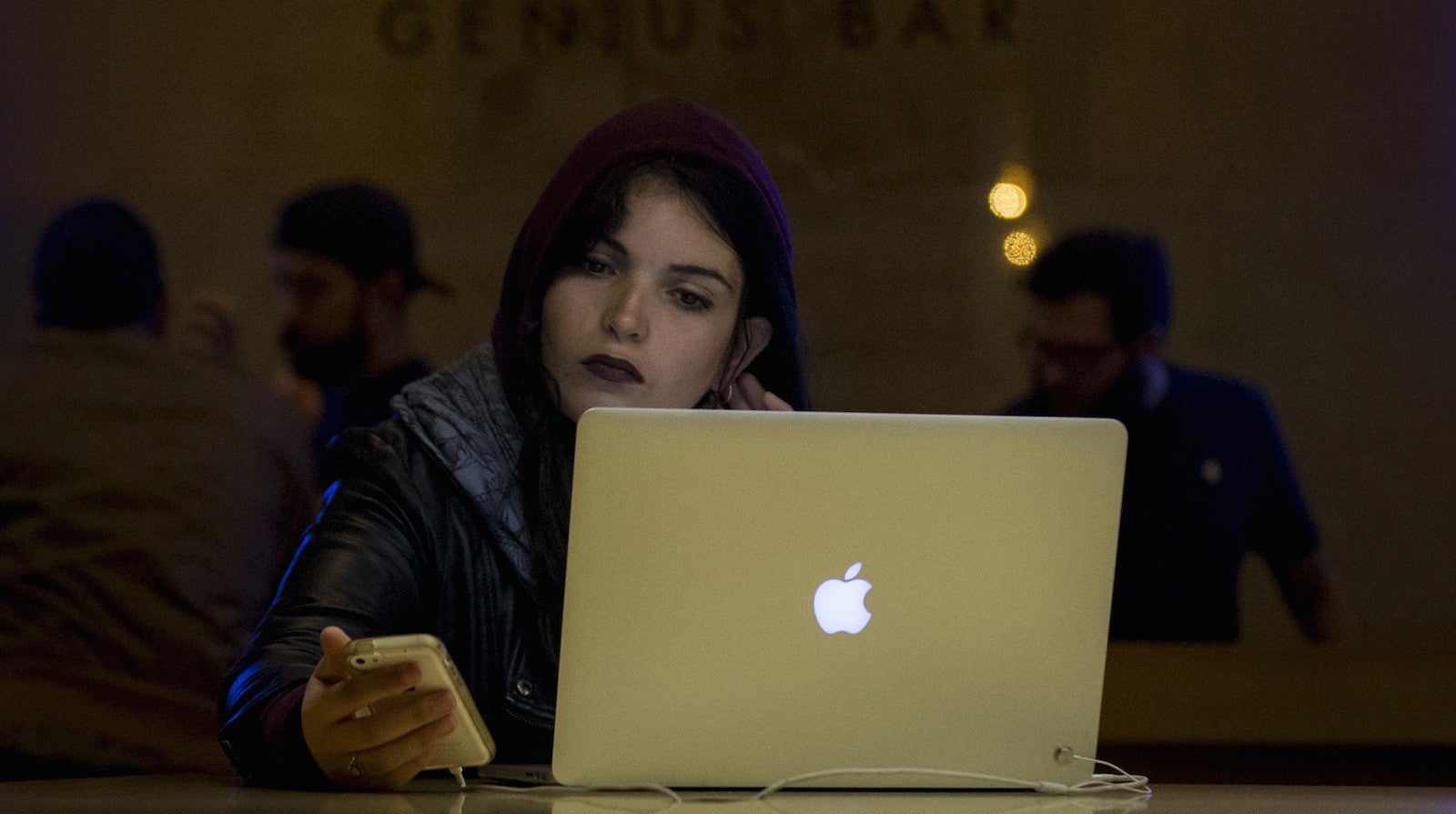Give up on email—it’s the wrong way to keep in touch
I’ve been thinking about email’s death crawl.


I’ve been thinking about email’s death crawl.
Surely it’s on its way out as a daily communication tool, but the rate of its death seems to differ from person to person. (I’d love to see the great, insightful studies and stats I know must exist on this.) I’m interested in how people of my generation—on the precipice of 40, who saw email be born—are responding to this small life change, and what it means for how communication is changing.
When email first started to catch on in the professional setting, I had my first job. It was in book publishing. The emails that people were sending then were incredibly long—as long as the longest Medium post, and formatted exactly like letters.
They whizzed their way back and forth across Manhattan. Soon enough, those emails branched off into memos, jokes, forward twigs. Email settled into predictable patterns, and people complained about it, like junk mail. It was the way to stay in touch with the people in your life, and it was inevitable. Not telling you anything you don’t already know here.
Email’s hierarchy of attention
Hyperlapse years. We now get our baseline information from social media and we text for details. What’s email’s role at this point? This is what I see:
- Newsletters
- Billing & receipts
- Appt & event reminders
- Job or institution updates
- The acquaintance-level communication
- The periodic catch-up with a faraway friend
Imagine these as a kind of reverse Maslow’s pyramid, but instead of the hierarchy of needs, it’s a hierarchy of attention.
The upper layers are the smallest, the most straightforward, and the most gratifying in terms of being able to handle and dispatch quickly. All of the reminders, newsletters, billing, receipts, and institutional passive communication really don’t demand much attention. They can all be dealt with systematically, as fast as possible, depending on bandwidth.
It’s email, but ultimately they’re just another folder system for dealing with the maintenance tasks of life.
Now we get into the two most nebulous areas where email still wildly differs from person to person: the acquaintance-level communication, and the periodic catch-up. This is where I think people in the 35–45 age range seem a little confused and disjointed. They adjusted to email, but the switch to understand how to move to a completely “in real time” communication standard has been a little perplexing.
How can it work for more nuanced, thoughtful communication demanded by the attention-eating bases of the pyramid?
We are moving toward more fluid communication
I have no easy answer for this, but what my gut is telling me is that we are moving toward more fluid-motion communication as a society.
Fluid means fast, streamlined, in-motion, and on mobile devices. We won’t be spending as much time formulating emails to each other to try to keep our relationships up-to-date. It’s something that might have made me sad years ago. It would have signaled that we’re not writing each other anymore.
I’ve changed my mind about it now. I now think that it’s more important to tune in to how you feel when you’re actually in person with someone, talking with them. Do they make you happy? Are you learning from them? Moving out of your head and your in-box, and into a more active communication with others is a healthier way to understand your relationships and the world.
Not everyone is convinced yet. I’ve felt pushback from friends and family as I try to kill email, and evolve my communication habits.
They are used to getting more thoughtful “letters” from me, and enjoy the reward of receiving that distraction in their inbox. But at what cost?
Email adds unnecessary stress
The base of the pyramid, those meaty friend emails, is the widest, the most attention-grabbing. Those emails may deliver the biggest distraction when they arrive, but they also sit like heavy to-do weights, asking for attention in return, collecting dust as they are ignored in favor of the more easily managed guilt-free folder tasks.
In the end, they just cause stress. They are added to the pile of incremental unnecessary “shoulds” (a big pile in the age range of 35–45). Looking at the whole life cycle of the exchange, it’s a net loss.
Over time, as we actually want to connect—and need to destress our lives—our tools will help us create moments together in real life.
The faraway friend catch-ups will happen less often, but will be more intentional. (I have friends I only get to talk to once or twice a year, but those undistracted phone conversations are more valuable to me for their rarity.) Email will continue to whittle itself into a text message: “Talk to you at 6:15?” “You around now?” “See you at the beach.” And this is nothing to fear. This is a good thing.
As for the acquaintances? There’s always lightweight social media, until you’re lucky enough to get to know the ones who will become friends. Or, they’ll peacefully drift out of the inbox altogether.